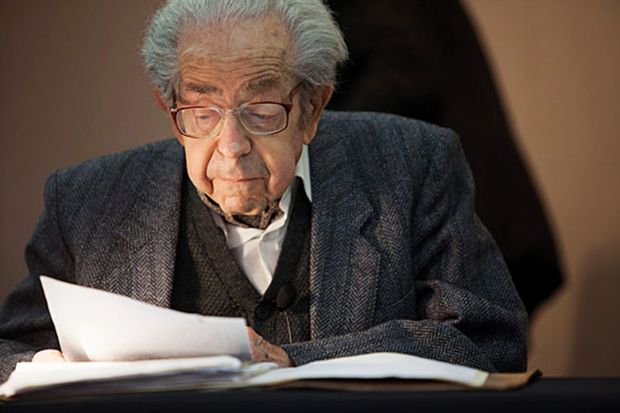An architectural historian who became the first director of Harvard University’s renowned Carpenter Center for the Visual Arts has died.
Eduard Sekler was born in Vienna in September 1920 and took a degree in architecture at the Vienna University of Technology. He then moved to London to study with the legendary art historian Rudolf Wittkower at the School of Planning and Regional Research and obtained a PhD in art history at the Warburg Institute (now part of the University of London’s School of Advanced Study). In 1954, he was invited to join the faculty at Harvard by Josep Lluís Sert, dean of the Graduate School of Design. He would remain there for the rest of his career, eventually retiring as Osgood Hooker emeritus professor of visual art and emeritus professor of architecture.
In 1962, Professor Sekler became coordinator of studies at the newly built Carpenter Center, the only building designed by Le Corbusier in the US, and then its director four years later. In 1968, he co-founded with Albert Szabo Harvard’s visual and environmental studies department, where he made a point of reaching out to other disciplines across the university to bring scientists on to the staff.
The author of Wren and His Place in European Architecture (1956) and Le Corbusier at Work: the Genesis of the Carpenter Center for the Visual Arts (with William Curtis, 1978), Professor Sekler had a deep understanding of the European tradition. Alfred Guzzetti, the current Osgood Hooker professor of visual arts at Harvard, described him as “a very European presence. Through Eduard’s recruitment of faculty and staff, he strengthened the European – and even international – character of the enterprise. He saw design at the centre opening out to the broader practices of the contemporary visual arts in the way that modernist European architecture did.”
Alongside his European interests, Professor Sekler was passionately committed to the preservation of the cultural and architectural heritage of Nepal’s Kathmandu Valley, which he first visited in 1962 for the United Nations Educational, Scientific and Cultural Organisation. He went on to found, in 1990, the Kathmandu Valley Preservation Trust, which has saved more than 50 buildings and monuments.
“I knew that change was coming,” Professor Sekler told the Harvard Gazette in 2005, “but I didn’t know it would come in such a fast and uncontrolled way and destroy that beautiful valley. It was clear to me that something had to be done.”
Professor Sekler’s eminence in his field was reflected in a collection edited by Alexander von Hoffman, Form, Modernism, and History: Essays in Honor of Eduard F. Sekler. He died on 1 May and is survived by his wife, Mary Patricia.
Register to continue
Why register?
- Registration is free and only takes a moment
- Once registered, you can read 3 articles a month
- Sign up for our newsletter
Subscribe
Or subscribe for unlimited access to:
- Unlimited access to news, views, insights & reviews
- Digital editions
- Digital access to THE’s university and college rankings analysis
Already registered or a current subscriber?





